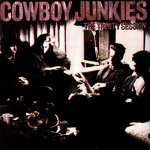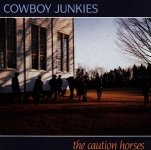That might be useful, although probably well covered elsewhere. It would not answer the OP's question, because his question either does not have sufficient meaning to be answered or it can be trivially answered.adason said:I thought this thread will discuss various topologies of phono circuits, their pros and cons.
The only sensible meaning I can attach to 'dynamics' is that loud and soft passages in the input retain the same ratio of signal level in the output. To achieve this you simply need amplifying stages whose gain does not vary with signal level, either directly (via odd-order distortion) or indirectly (e.g. via supply rail variations). All decent RIAA preamps designs will already achieve this.
An alternative meaning is that the OP seeks a preamp which artificially raises the dynamic range of the signal, either acting as an expander or modifying gain in some other way (such as via a poor PSU). Some preamps may do this, especially those 'tuned by ear' - but such preamps are also likely to have poor RIAA characteristics and so cannot be considered as music reproducers.
But the problem is that 'dynamics' is not clearly defined at all and there is no common reference point.
There is a common reference point for those of us who've built line level electronics and listened to various circuit configurations. Those who haven't, will lack that.
I could just as easily start a thread saying I need more flooby from my phono stage and people would be just as wise to my requirements as to the OP here.
The difference then would be nobody would be wise to your requirements. Here there are evidently a few who know what the OP's going on about.
By transamps, do you mean something like the phonoclone?
Yes, but for MMs. Oh and balanced. Heresy on many levels 🙂
@ ALPUY: You do seek for the less of parts and a minimal circuit and a minimal build-up.-)
Try SALAS-RIAA or other little ones: 2- or 3-stages-RIAAs, any years old. Look for schemata in older service manuals. A dream in "dynamics": clearness, noiselessness;-)))
Try SALAS-RIAA or other little ones: 2- or 3-stages-RIAAs, any years old. Look for schemata in older service manuals. A dream in "dynamics": clearness, noiselessness;-)))
Yes, but for MMs. Oh and balanced. Heresy on many levels 🙂
Do you have a link? I like heresy!
This seems like a good definition
Except 'live' has not been defined. Does he mean a rock concert, or a string quartet or Wagner in a concert hall? No reference.
There is a common reference point for those of us who've built line level electronics and listened to various circuit configurations. Those who haven't, will lack that.
Here there are evidently a few who know what the OP's going on about.
Yet those few in the secret society still cannot explain to the rest of us what is meant. So let's see, I've build discrete, opamp and tube line stages and never have I heard a lack of dyanmics from vinyl assuming the dynamics are there to start with (which isn't always the case).
Yet those few in the secret society still cannot explain to the rest of us what is meant.
Doesn't look to be the case. Those who think there's a 'secret society' haven't grasped what's meant.
So let's see, I've build discrete, opamp and tube line stages and never have I heard a lack of dyanmics from vinyl assuming the dynamics are there to start with (which isn't always the case).
So you have therefore got your own meaning for 'dynamics' as you just used it (typos notwithstanding). So what's your definition?
Do you have a link? I like heresy!
The unit I have on the bench is here mechanical resonance in MMs . Small person has somewhat delayed getting this all hooked up.
Be warned there is much discussion there about fondly held beliefs being put up against the wall and shot 🙂.
So you have therefore got your own meaning for 'dynamics' as you just used it (typos notwithstanding). So what's your definition?
Nothing I have ever built has changed the dynamics coming off the record. Noise floor yes, but I cannot see how the amplification can change things unless its broken. It's possibly that FR differences could change perception of dynamics and I am sure there are tricks that mix engineers use to do this. But for now I am either confused or cloth eared 🙂.
I don't see how one follows the other. Recordings are highly manipulated and optimized in a way that live music rarely is. Being faithful to that type of audio manipulation can be both Hi-Fi and more to some people's taste than the wild and woolly world of live music. Not my preference, but I don't see how it negates fidelity.I have seen people on here say that they prefer their system to live music. Such people are not interested in hi-fi.
Noise floor yes, but I cannot see how the amplification can change things unless its broken.
Are you saying that you cannot see how line stages can cause modulation of the noise floor?
Be warned there is much discussion there about fondly held beliefs being put up against the wall and shot 🙂.
that's what heresy is all about, isn't it? ;-)
This seems like a good definition 🙂That the strong is strong and the soft is softer.
Thinking about dynamics sound mastering into less dynamic.. there is a reverse option, not for vinyl yet, but for CD.
Except using an expander after the phono stage, loading all your phono stage tubes with chokes is one way to increase dynamics, as it acts kind of like an expander in the analog.
I had an interesting broadcasting cd player which had compression options as well as increasing dynamics (expander). Increasing dynamics didn't do too much good to music, funny that's all.
You can use such a device after the phono stage to increase dynamics:
DBX 1BX, Dynamic Range Expander, Untested. | eBay
dbx 3BX-DS 3BX DS 3 band Dynamic Range Contoroller vintage Made in Japan | eBay
DBX 3BX 3 BAND DYNAMIC RANGE EXPANDER VINTAGE MADE IN USA VERY GOOD! | eBay
Been used for ever to counter vinyl dynamic limitations. Personally I don't see the point, my vinyl is more dynamic than my digital source thanks to the refinement in cartridges and turn tables in the last decade.
If you limit yourself to phono, install audiophile chokes in the anode, grid, cathode and power supply.
Except using an expander after the phono stage, loading all your phono stage tubes with chokes is one way to increase dynamics, as it acts kind of like an expander in the analog.
I had an interesting broadcasting cd player which had compression options as well as increasing dynamics (expander). Increasing dynamics didn't do too much good to music, funny that's all.
You can use such a device after the phono stage to increase dynamics:
DBX 1BX, Dynamic Range Expander, Untested. | eBay
dbx 3BX-DS 3BX DS 3 band Dynamic Range Contoroller vintage Made in Japan | eBay
DBX 3BX 3 BAND DYNAMIC RANGE EXPANDER VINTAGE MADE IN USA VERY GOOD! | eBay
Been used for ever to counter vinyl dynamic limitations. Personally I don't see the point, my vinyl is more dynamic than my digital source thanks to the refinement in cartridges and turn tables in the last decade.
If you limit yourself to phono, install audiophile chokes in the anode, grid, cathode and power supply.
Dynamics is perhaps not the best term here, because it has a conventional technical meaning. What we are seeking is "life" of reproduced music, PRaT (pace, rhytm and timing), punch, feeling of presence, involving, etc.
There used to be a belief (that comes from the Quad 405 marketing, not sure) that all technically good amplifiers sound the same. The criteria are low distortion, low noise, whatever. Same for phono preamps.
I don't share this opinion. Even if the topology and active elements are the same, there are other variables (capacitors in the signal path (all capacitors are in the signal path BTW), power supply are the most evident) that influence the sound - even if there is no difference in measured parameters.
There used to be a belief (that comes from the Quad 405 marketing, not sure) that all technically good amplifiers sound the same. The criteria are low distortion, low noise, whatever. Same for phono preamps.
I don't share this opinion. Even if the topology and active elements are the same, there are other variables (capacitors in the signal path (all capacitors are in the signal path BTW), power supply are the most evident) that influence the sound - even if there is no difference in measured parameters.
Originally Posted by Onvinyl View Post
I have yet to hear 'boring live music'. Never came across such. Often, it might not be to my taste, but boring? No way.
Then their The Trinity Session

Recorded in one takes around a single mic with minimal processing
And their The Caution Horses

With the same setup up and single tracks added...
Played through a Hifi system must be SOOPER boring!
"one stereo microphone direct to tape" ... "on 2-track RDAT using one single Calrec Ambisonic Microphone."
The Trinity Session - Wikipedia
The Caution Horses - Wikipedia
Cheers,
Jeff
PS How 'boot them hansom Canucks, eh? That was awsome! 😉
I have yet to hear 'boring live music'. Never came across such. Often, it might not be to my taste, but boring? No way.
Cowboy Junkies.
Then their The Trinity Session

Recorded in one takes around a single mic with minimal processing
And their The Caution Horses

With the same setup up and single tracks added...
Played through a Hifi system must be SOOPER boring!
"one stereo microphone direct to tape" ... "on 2-track RDAT using one single Calrec Ambisonic Microphone."
The Trinity Session - Wikipedia
The Caution Horses - Wikipedia
Cheers,
Jeff
PS How 'boot them hansom Canucks, eh? That was awsome! 😉
Last edited:
Are you saying that you cannot see how line stages can cause modulation of the noise floor?
More that if the noise floor is high enough that it enters in the equation then the line stage is 'broken' as in not fit for purpose. There is the exception of vinyl with a very high noise floor. But still a well implemented line stage should not modulate that but simply pass it through warts and all.
When someone passes the 'Sousa test' and can hear a brass band mixed in 60dB below a choir singing I'll start to worry about low level. Right now I'm happy messing around with the basics, like how to get 20Hz to 20kHz +/-1dB from a vinyl front end with MM cartridge, which is challenging, if not impossible. But fun.
This is a good looking piece of equipment, the blurb sounds good too 😀
Pioneer RG-1 Dynamics Processor | eBay
Pioneer RG-1 Dynamics Processor | eBay
Discrete MM preamplifiers can have massive increase in input capacitance when the amplifier runs towards clipping. his happens when the input device suddenly has a high Miller capacitance as the error signal rises.
The capacitance jump can cause treble peaking, an expansion effect
The capacitance jump can cause treble peaking, an expansion effect
- Status
- Not open for further replies.
- Home
- Source & Line
- Analogue Source
- How to get good dynamics in phono stage